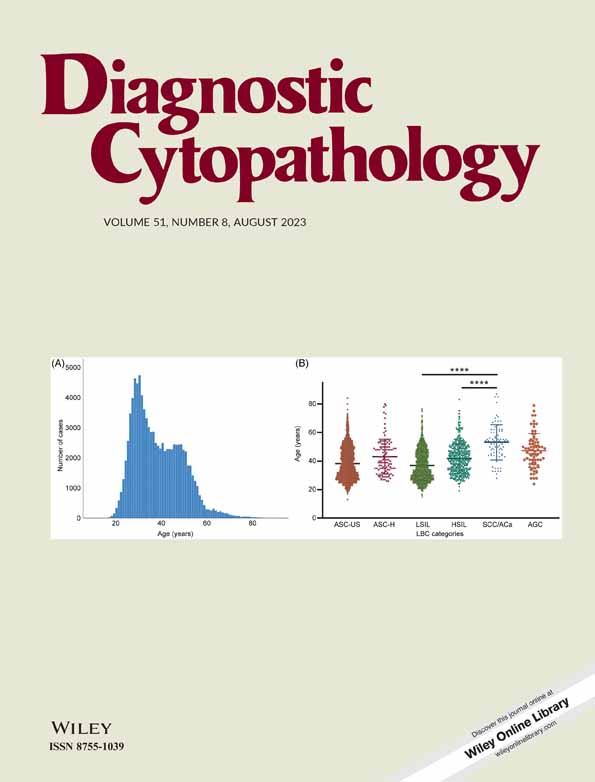TRPS1 outperforms GATA3 in pleural effusions with metastatic breast carcinoma versus mesothelioma
Abstract
Introduction
In evaluating malignant pleural fluid cytology, metastatic adenocarcinomas and mesotheliomas are often differential diagnoses. GATA binding protein 3 (GATA3) has historically been used to confirm metastatic breast carcinomas; however, GATA3 has low specificity if mesothelioma is included in differential diagnoses. Trichorhinophalangeal syndrome type 1 (TRPS1) protein is expressed in all types of breast carcinomas, with reported high specificity and sensitivity. We investigated the performance of TRPS1 immunohistochemistry (IHC) and compared it to GATA3 in pleural fluids diagnosed with metastatic breast carcinoma and mesothelioma.
Methods
Thirty-six consecutive ThinPrep pleural fluids and 4 pleural fine needle aspirations (FNAs) with diagnoses of metastatic breast carcinoma (21) and mesothelioma (19) were retrieved, and IHC with TRPS1 and GATA3 was performed on all. Immunoreactivity scores for TRPS1 were calculated by multiplying percentage of immunoreactive cells by staining intensity. Immunoreactivity scores were negative if 0 or 1, low positive if 2, intermediate positive if 3 or 4, or high positive if 6 or 9. Nuclear immunoreactivity of ≥10% with at least moderate intensity was judged GATA3 positive.
Results
GATA3 showed immunoreactivity in all metastatic breast carcinomas and 84% of mesotheliomas. TRPS1 was immunoreactive in all breast carcinoma cases (18 with a score of 9 and 3 with a score of 6). TRPS1 showed low positivity in 5% of mesothelioma cases with all other cases being negative.
Conclusion
When cytomorphologic differential diagnoses of mesothelioma exist, TRPS1 is a more specific marker than GATA3 for confirmation of metastatic breast carcinoma in pleural fluid cytology.
CONFLICT OF INTEREST STATEMENT
The authors declare no conflicts of interest.
Open Research
DATA AVAILABILITY STATEMENT
The data that support the findings of this study are available from the corresponding author upon reasonable request.




